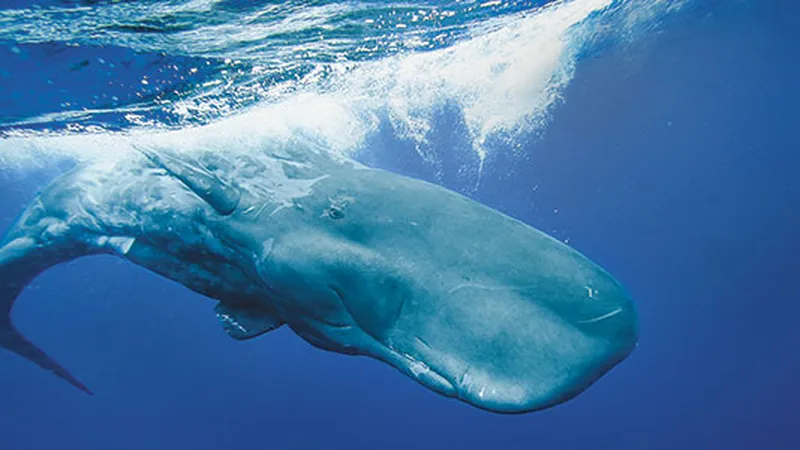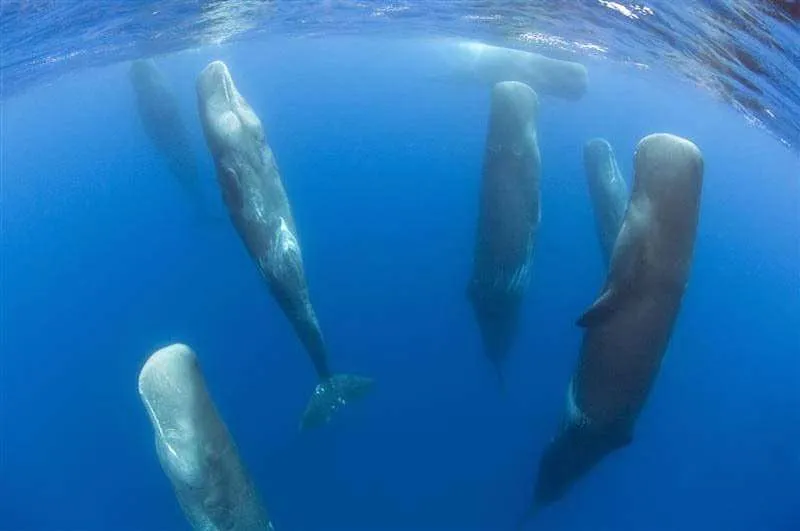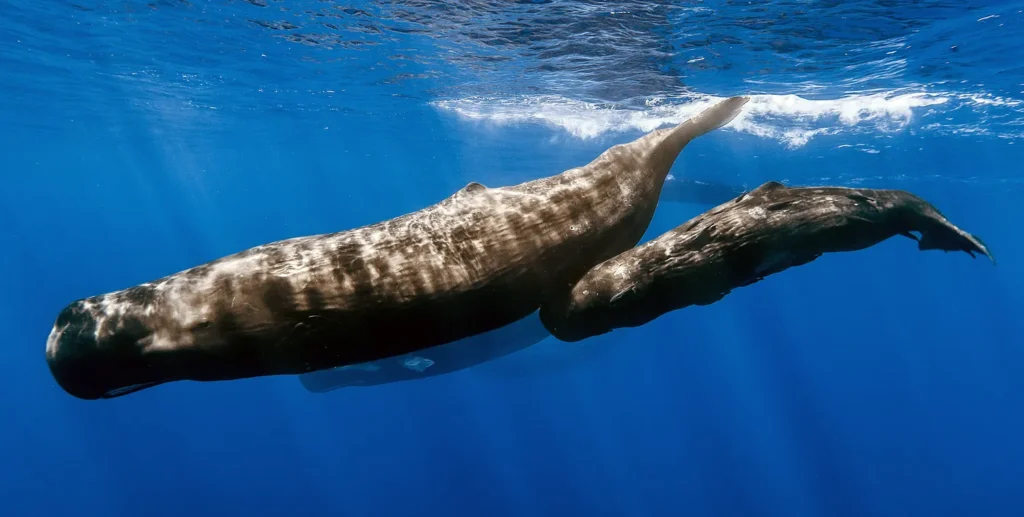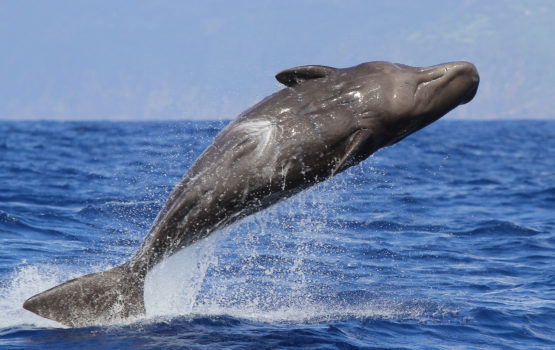Sperm whale (Physeter macrocephalus)- one of the most mysterious marine mammals, which impresses with its size, deep-sea lifestyle and high intelligence. It has the largest brain of any known animal, has a unique echolocation system that allows it to hunt at great depths, and is able to make long dives, reaching more than 2000 meters.
These animals were an important part of whaling culture, and their unique organ-the sperm sac-has long remained a mystery to science. Sperm whales play a key role in marine ecosystems, maintaining the balance of squid populations and contributing to the nutrient cycle in the oceans.
Next, we take a look at all aspects of this deep-sea giant's life, including its biology, behavior, nutrition, communication, and the threats it faces in the modern world.

Scientific classification
🔬 Classification of the sperm whale:
✔ The Kingdom: Animals (Animalia)
✔ Type: Chordal (Chordata)
✔ Class: Mammals (Mammalia)
✔ Row: Cetaceans (Cetacea)
✔ In a row: Toothed whales (Odontoceti)
✔ Family: Sperm whales (Physeteridae)
✔ Gender: Sperm whales (Physeter)
✔ View: Physeter macrocephalus
📌 Interesting!
* The sperm whale is the only member of the genus Physeter
* Its closest relatives are the dwarf (Kogia breviceps) and small sperm whales (Kogia sima), which are significantly smaller in size
Dimensions and appearance
💠 Main Features:
• Length: males - up to 20.5 m, females - up to 12 m
• Weight: males-40-57 tons, females-13-25 tons
• Color scheme: dark gray or brown, can change its hue depending on the light
• Head shape: massive, makes up 30-35% of the total body length
• Dorsal fin: low, more like a hump
• Tail: wide, with a span of up to 5 m
📌 Interesting!
The sperm whale has asymmetrically arranged blowholes-on the left side of the head, which is a unique feature among cetaceans.

Anatomy and Physiology
🧠 Brain
* The largest among all known animals – about 8 kg
* A well-developed neocortex responsible for complex social behavior
* High level of intelligence and learning ability
🫁 Respiratory system
* May hold your breath for a long time. 60-90 minutes
* Exhales air at a 45° angle, creating a fountain up to 5 m
🦷 Teeth
* In the lower jaw 20-26 massive teeth, each k 20 cm in length
* Teeth are used for grabbing prey, but not for chewing
📌 Interesting!
The sperm whale can dive to a depth of 2-3 kmthis makes it one of the deepest divers among mammals.
Spermaceti bag: the main secret of deep-sea diving
🔬 What is a spermaceti organ?
* Occupies most of the head
* Contains up to 2000 liters wax substance-spermaceti
* Helps regulate buoyancy
📌 How does it work?
* When cooled, the spermaceti hardens, making the sperm whale heavier → it sinks
* When heated, the spermaceti becomes liquid and the whale rises up
This unique mechanism helps the sperm whale to reach a depth of more than 1000 m with minimal effort.

Habitat and distribution
🌍 Where do sperm whales live?
* Prefer deep water zones (from 300 to 3000 m)
* The largest populations are concentrated in equatorial and temperate waters
* Avoid polar regions
📌 Interesting!
Males can swim in Arctic waters, while females and pups stay in warmer latitudes.

Food and hunting techniques
🍽 What does a sperm whale eat?
* Cephalopods (especially giant squid)
* Deep-sea fish
* Other marine invertebrates
💡 How does he hunt?
* Uses echolocation to detect prey at depths of
* Delivers powerful results clickthat stun the victim
* Captures squid with massive jaws
📌 Interesting!
A sperm whale can eat up to 900 kg of food for the day!
Communication and social structure
🗣 How do sperm whales communicate?
* Use click codes for transmitting information
* Have different "dialects" depending on the population
👨👩👦 Family device
* Females and cubs live in groups (up to 20 individuals)
* Adult males lead a solitary lifestyle
📌 Interesting!
Sperm whales can pass on knowledge to the next generation, making them one of the most intelligent marine animals.
Threats and species protection
⚠ Main threats:
✔ Industrial pollution of the oceans
✔ Collision with ships
✔ Noise pollution that interferes with echolocation
✔ Remnants of whaling

🌍 Security measures:
* Listed in IUCN Red List
* Protected International Convention on the Prohibition of Whaling
* Creation of marine reserves
📌 Interesting!
A ban on sperm whale fishing in the 1980s has contributed to a partial recovery in sperm whale numbers.
Conclusion
The sperm whale is a unique deep-sea giant that combines amazing physiological adaptations, a high level of intelligence and a complex social structure. However, the threats facing this species require enhanced protection measures to preserve its populations in the future.
🛑 This is one of the most interesting creatures worth protecting and exploring!